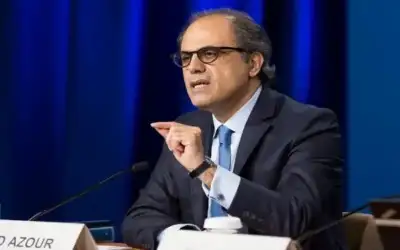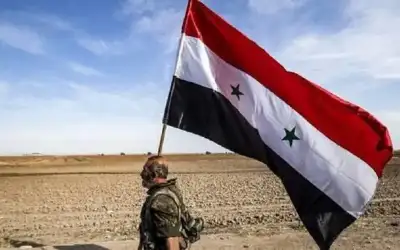Iran must stop meddling and start governing
نيسان ـ نشر في 2018-01-04 الساعة 12:49
Last week, as much of the world reflected on 2017 and looked forward to 2018, hundreds of Iranians demonstrated in the city of Mashhad against the Iranian government. While some analysts are suggesting that the demonstrations might have been initially orchestrated by opponents of President Hassan Rouhani, they quickly morphed into something with potentially long-lasting and far-reaching ramifications. Unlike the student protests of 1999 and “Green Revolution” of 2009, which were largely led by educated, urban elites in Tehran expressing their disapproval of what they considered to be the rigged election of Mahmoud Ahmadinejad, the current wave of protests has spread far and wide. More worrisome for the regime, many of the people protesting come from cities that had been supportive of the government, including from the strongholds of Supreme Leader Ali Khamenei.
What happens over the next few days and whether or not these protests become a fully-fledged uprising, or even a revolution that topples the government, is anyone’s guess. However, it has become clear that the regime’s refusal to abide by the norms, conventions and laws of international relations has not only turned it into an international pariah, it has also put whatever legitimacy it might still have in the eyes of Iranians in jeopardy.
Protesters have not only made their disapproval of the government, including Khamenei himself, known but they have also expressed anger at the regime’s continuing adventurism abroad, especially its interference in Syria and Lebanon.
Fahad Nazer
The protests are about to enter their second week. Unlike the last round of unrest in 2009, many more Iranians now have access to smartphones and are documenting the protests, as well as their suppression by authorities and the clashes with security forces. While even a cursory review of Iran’s modern history suggests that political unrest and violence are not new — after all, it was how the current regime came to power in 1979 — a number of Iranian observers are already marveling at the speed with which the protests spread and at the many diverse Iranian cities witnessing unrest. While most Iranian observers are reluctant to make any predictions, at least one prominent analyst quickly concluded that the government was in “deep trouble.”
Six days into the protests, at least 21 people have died and hundreds have been injured and arrested. While Iranian security forces have once again resorted to violence to suppress the demonstrations, some protesters have set police cars on fire. There are dozens of videos showing clashes between the protesters and the dreaded Basij forces. At the same time, reports are suggesting that some security forces have refused to use violence against protesters. That has led some Iranian scholars and analysts to entertain the possibility that the regime might rely on some of the Shiite militias it has supported in Iraq, Afghanistan and Lebanon. It is hard to see how the regime could survive politically and retain any semblance of legitimacy should it resort to such foreign mercenaries.
In 2009, the protests were mostly motivated by politics. On the other hand, the current protests were spurred by economic stagnation, high unemployment, a wide perception of mismanagement and graft, and the inability of the Iranian government to improve economic conditions following its agreement with six other nations — including the US — requiring it to limit its nuclear energy activities in return for sanctions relief. Protesters have not only made their disapproval of the government, including Khamenei himself, known but they have also expressed anger at the regime’s continuing adventurism abroad, especially its interference in Syria and Lebanon. Many have called on the government to stop these foreign activities and to instead meet its obligations to the people of Iran by investing in the oil industry, the country’s ailing airline and other sectors of the economy.
For its part, much of the international community has expressed support for the protesters. US President Donald Trump and his administration have been among the most vocal in condemning the Iranian government’s violent crackdown. Trump has issued several warnings via his Twitter account about violations of human rights, ending one such tweet by saying that the US “is watching.” There have also been admonishments against the Iranian government shutting down social media platforms like Telegram, which many protesters were using to communicate.
While Rouhani has delivered some remarks that seem to acknowledge the protesters’ grievances, security officials have used the familiar language of threats. Even Foreign Minister Mohammed Javad Zarif, who often presents himself as the consummate diplomat, especially when addressing Western media or audiences, implied that these protests are somehow the work of outside parties, or “infiltrators” as he called them.
The Iranian regime should address the grievances of Iran’s proud people and act like a responsible international actor and government. Ultimately, what the people of Iran and the international community are demanding is not remotely unreasonable, nor is it difficult to achieve. The Iranian regime should stop its interference in the affairs of countries in the region, end its support for militant organizations and terrorist operations and instead focus its energy on providing a sense of hope for its predominantly young population.
• Fahad Nazer is a political consultant to the Embassy of Saudi Arabia in Washington and an International Fellow at the National Council on US Arab Relations. He does not represent or speak on behalf of either organization.
Twitter: @fanazer





